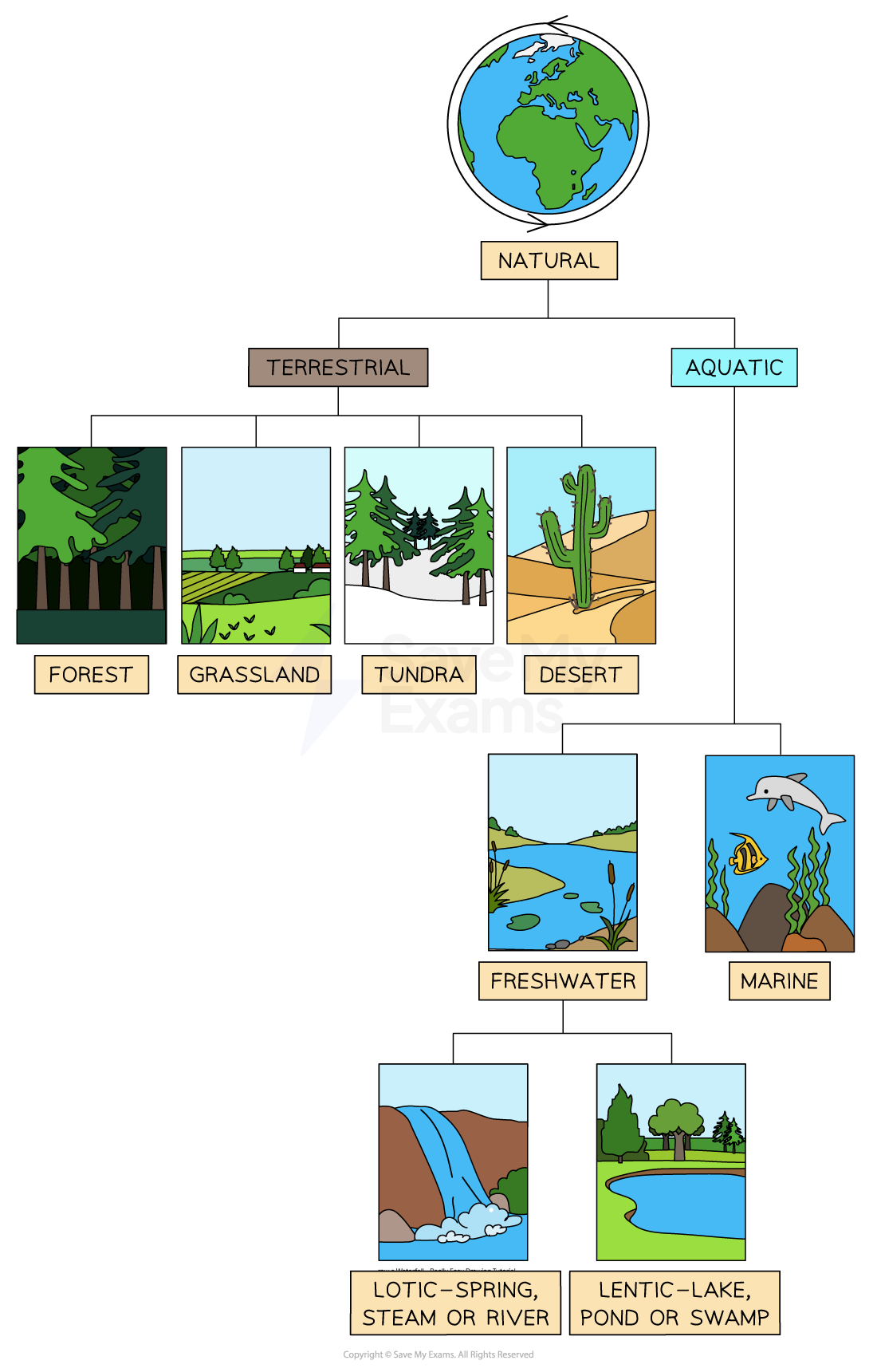Nature of Terrestrial Ecosystems
- Ecosystems vary in size from small (pond) to large (ocean), local (ecosystem) to global (biome)
- There are two types of ecosystems:
- Terrestrial - land based
- Aquatic - water based, either freshwater or marine (salt water)
- Terrestrial ecosystems are exclusively land-based system, and distributed around climatic zones:
- Forests - consist of multiple flora (particularly trees) fauna and microorganisms, which help in maintaining the temperature of the earth and are a major carbon sink
- Grasslands - vegetation is dominated by grasses and herbs. Temperate and tropical or savanna grasslands are examples
- Tundra - no trees, limited flora and fauna as found in cold climates or where rainfall is scarce. These are covered with snow for most of the year and in high latitudes and altitudes
- Deserts - found throughout the world and classified as either hot or cold and are regions with precipitation rates of less than 250mm per annum - Antarctica is a cold desert, whereas the Sahara is a hot desert

Ecosystems flow chart showing terrestrial and aquatic systems
- The Earth, taken as whole, is a series of inter-connected ecosystems, often connected as larger biomes, which are loosely organised and based on the species of plants and animals that live in them
- Every factor in an ecosystem is co-dependant on other factors, either directly or indirectly
- E.g. a change in temperature will affect plant growth
- Animals dependant on the plant for food and shelter, either has to adapt to the change, move to another ecosystem, or die
- There are various factors that play an important role in determining what can live in that particular ecosystem
- Ecosystems are dependent on abiotic factors, or conditions, such as soil, light, temperature, precipitation, geology, altitude, and latitude
- Latitude strongly influences an area’s temperature, which produces climates such as polar, tropical, and temperate
- These climates determine different natural biomes and have characteristic species of plants and animals
Determining Factors for Terrestrial Ecosystems
| Factor | Influence |
| Climate |
Precipitation - determines levels of vegetation and type. Wetter climates can support more trees Temperature - determines type of plant species that grow - tropical or temperate forest species Latitude - determines amount of light and seasons and therefore, the temperature of the area (or lack of) Nutrient cycling - climate affects the rate of nutrient cycling and the availability of nutrients in the soil |
| Topography |
Altitude - as altitude increases the temperature drops and growth is slowed. Vegetation tends to be short with fewer species Aspect - determines how much light and warmth vegetation receives for growth Slope angle - the steeper the slope, the less soil available for plant growth, but drainage will be higher and this helps to lower the acidity of the soil Shelter - hills can protect vegetation from prevailing winds and rain. These sheltered areas can form micro-climates on the leeward side and has different growing conditions |
| Soil |
Affected by climate and the availability of nutrients in the soil. Heavy rain, leaches nutrients away from the soil which affects plant growth Geology affects nutrients available within the soil, along with depth and texture, which in turn dictates type of vegetation growth. Areas that are predominately chalk, have alkaline soils, which are nutrient poor with the main vegetation being grass. Drainage - if poor, leads to waterlogging and limited plant type and growth (heather on moorlands Time - soil takes time to form and colonisation by vegetation is very slow |

